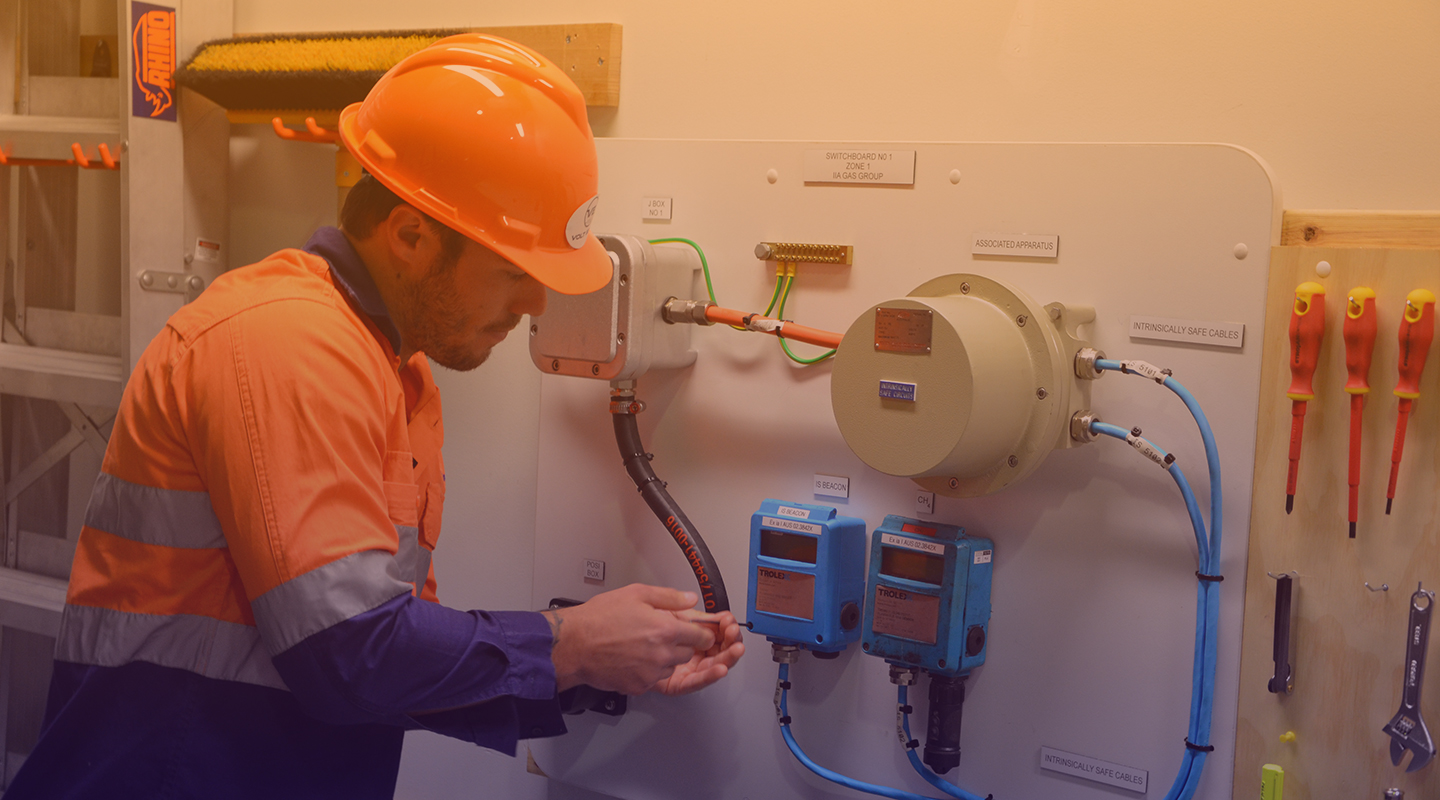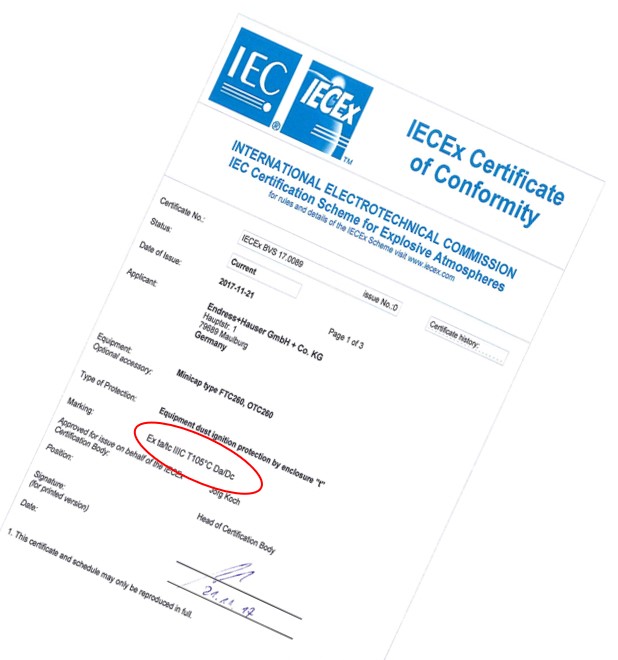The Ultimate Guide To Roar Solutions
The Ultimate Guide To Roar Solutions
Blog Article
A Biased View of Roar Solutions
Table of ContentsExcitement About Roar SolutionsFacts About Roar Solutions RevealedHow Roar Solutions can Save You Time, Stress, and Money.
In such an environment a fire or surge is possible when three basic conditions are fulfilled. This is commonly referred to as the "dangerous area" or "burning" triangle. In order to protect installments from a possible explosion a technique of evaluating and classifying a possibly harmful location is needed. The purpose of this is to guarantee the appropriate selection and installation of equipment to eventually prevent an explosion and to guarantee security of life.
(https://www.bitchute.com/channel/JJyNq2gAk2M7)
No devices ought to be set up where the surface temperature level of the tools is more than the ignition temperature of the provided threat. Below are some usual dust hazardous and their minimum ignition temperature. Coal Dirt 380C 225C Polythene 420C (melts) Methyl Cellulose 420C 320C Starch 460C 435C Flour 490C 340C Sugar 490C 460C Grain Dust 510C 300C Phenolic Resin 530C > 450C Aluminium 590C > 450C PVC 700C > 450C Residue 810C 570C The possibility of the threat existing in a focus high enough to trigger an ignition will differ from area to place.
In order to classify this risk an installation is separated right into locations of risk relying on the quantity of time the unsafe is present. These areas are referred to as Zones. For gases and vapours and dusts and fibers there are 3 areas. Area 0 Zone 20 A harmful atmosphere is highly likely to be existing and might be existing for extended periods of time (> 1000 hours each year) and even constantly Area 1 Zone 21 An unsafe environment is possible but not likely to be present for extended periods of time (> 10 450 C [842 F] A category of T6 indicates the minimal ignition temperature is > 85 C [185 F] Hazardous location electrical devices possibly made for use in higher ambient temperatures. This would suggested on the score plate e.g. EExe II C T3 Ta + 60C( This indicates at 60C ambient T3 will not be exceeded) T1 T1, T2, T3, T4, T5, T6 T2 T2, T3, T4, T5, T6 T3 T3, T4, T5, T6 T4 T4, T5, T6 T5 T5, T6 T6 T6 A T Class rating of T1 means the optimum surface temperature level created by the tool at 40 C is 450 C. Assuming the associated T Class and Temperature rating for the devices are proper for the area, you can constantly make use of an instrument with an extra strict Department score than needed for the location. There isn't a clear response to this question. It really does depend on the sort of equipment and what fixings need to be performed. Devices with particular test procedures that can not be executed in the area in order to achieve/maintain 3rd party ranking. Have to return to the manufacturing facility if it is before the tools's service. Area Repair Service By Authorised Personnel: Challenging testing might not be required nonetheless details procedures might need to be adhered to in order for the tools to preserve its 3rd party score. Authorised employees must be employed to perform the job properly Fixing should be a like for like replacement. New element need to be considered as a straight replacement requiring no special screening of the devices after the fixing is full. Each tool with a harmful rating ought to be reviewed separately. These are described at a high degree listed below, however, for even more comprehensive info, please refer directly to the guidelines.
Roar Solutions Fundamentals Explained
The tools register is an extensive database of tools documents that includes a minimum collection of fields to recognize each item's location, technical specifications, Ex lover category, age, and ecological information. This info is crucial for tracking and taking care of the equipment effectively within hazardous areas. In comparison, for regular or RBI sampling examinations, the quality will certainly be a mix of Thorough and Close examinations. The ratio of Detailed to Close assessments will certainly be established by the Equipment Risk, which is examined based upon ignition risk (the possibility of a source of ignition versus the chance of a combustible atmosphere )and the harmful area category
( Zone 0, 1, or 2). This variant will likewise affect the resourcing requirements for work prep work. Once Great deals are specified, you can establish tasting strategies based upon the example size of each Lot, which refers to the number of random devices items to be examined. To establish the called for example dimension, two aspects require to be reviewed: the dimension of the Lot and the category of assessment, which indicates the level of initiative that ought to be applied( lowered, typical, or boosted )to the examination of the Great deal. By combining the group of inspection with the Lot dimension, you can after that establish the proper denial criteria for a sample, implying the allowable variety of damaged things located within that example. For more information on this process, please refer to the Energy Institute Standards. The IEC 60079 standard advises that the maximum interval in between examinations ought to not exceed three years. EEHA assessments will also be conducted outside of RBI projects as component of set up maintenance and tools overhauls or fixings. These examinations can be credited toward the RBI sample sizes within the affected Lots. EEHA assessments are conducted to identify faults in electrical equipment. A heavy scoring system is crucial, as a single tool might have several mistakes, each with varying levels of ignition threat. If the combined score of both inspections is less than two times the mistake score, the Lot is deemed acceptable. If the Lot is still taken into consideration unacceptable, it should undertake a full inspection or validation, which may set off stricter evaluation protocols. Accepted Great deal: The root causes of any type of mistakes are determined. If a common failing mode is located, added tools may need examination and repair work. Faults are classified by intensity( Safety and security, Stability, House cleaning ), guaranteeing that immediate problems are evaluated and resolved promptly to reduce any kind of influence on safety and security or operations. The EEHA data source need to track and tape-record the lifecycle of faults along with the restorative activities taken. Applying a robust Risk-Based Examination( RBI )method is crucial for making certain conformity and safety and security in handling Electrical Devices in Hazardous Areas( EEHA) (electrical refresher course). Automated Fault Rating and Lifecycle Monitoring: Easily take care of mistakes and track their lifecycle to boost assessment accuracy. The introduction of this support for risk-based inspection additionally enhances Inspectivity's setting as a best-in-class remedy for governing compliance, along with for any type of asset-centric assessment usage case. If you want finding out more, we invite you to request a presentation and uncover exactly how our service can transform your EEHA administration procedures.
The Best Strategy To Use For Roar Solutions

In terms of eruptive risk, an unsafe area is a setting in which an eruptive ambience is existing (or might be expected to be present) in quantities that require special preventative measures for the construction, installment and use of devices. eeha certificate. In this post we check out the difficulties encountered in the work environment, the threat control steps, and the required competencies to work safely
These materials can, in specific conditions, create eruptive environments and these can have significant and unfortunate repercussions. Most of us are acquainted with the fire triangular remove any one of the three aspects and the fire can not occur, however what does this mean in the context of unsafe areas?
In many circumstances, we can do little about the degrees of oxygen in the air, but we can have considerable impact on resources of ignition, for instance electrical tools. Unsafe areas are recorded on the unsafe location category illustration and are determined on-site by the triangular "EX" indication. Below, among various other vital details, areas are split into three types depending on the risk, the likelihood and duration that an explosive ambience will certainly exist; Zone 0 or 20 is deemed one of the most hazardous and Area 2 or 22 is regarded the least.
Report this page